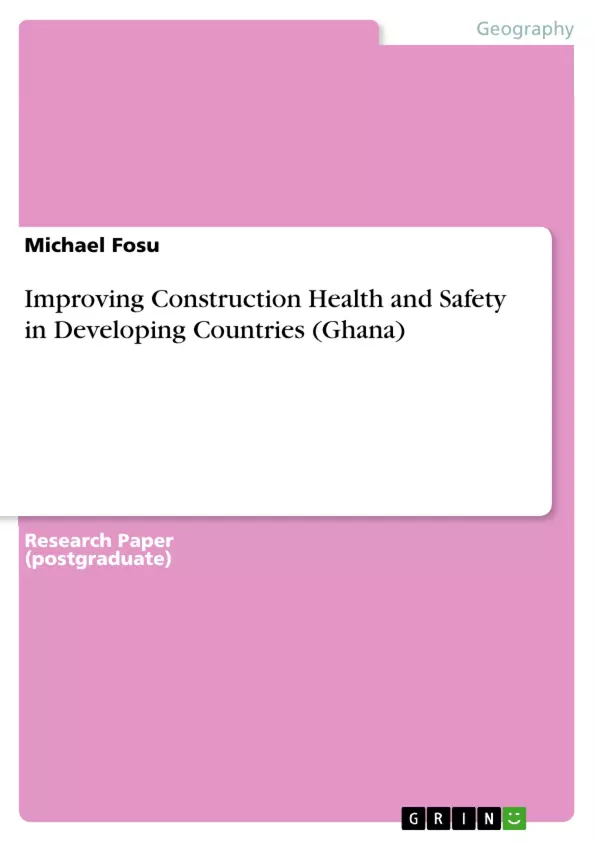The practice of Health and Safety continues to be a major challenge plaguing the construction industries of most developing countries. In Ghana, approximately 60 out of the total 900 occupational accidents recorded by the labour Department over the last decade has been fatal and consequently attributed to a poor Health and Safety practice observed on most construction sites.
The aim of the study was to critically investigate the constraints and barriers faced in implementing an effective health and safety practice within the Ghanaian construction industry and also provide suitable recommendations on improving the practice.
The research was purely based on a qualitative study conducted through the use of secondary data gathered from extensive literature review. The study specifically explored the standard and approved health and safety legislativeframeworks adopted in most developed countries especially in the UK and Australian construction industry.
Inhaltsverzeichnis (Table of Contents)
- CHAPTER 1: INTRODUCTION.
- 1.1 Context (Overview of H&S performance in Ghana)
- 1.2 Problem statement
- 1.3 Aim of study
- 1.4 Objectives
- 1.5 Research questions
- 1.6 Scope of study
- 1.7 Methodology
- 1.8 Significance of study
- 1.9 Impact of Study
- 1.10 Limitation of study
- 1.11 Organization of chapters
- 1.12 Research timeline
- CHAPTER 2: CONSTRUCTION HEALTH & SAFETY.
- 2.1 Defining health & safety
- 2.2 The need for H&S practices in the construction industry
- 2.3 Legislative governing H&S in the construction industry
- 2.3.1 Factors influencing poor construction H&S in developed and developing countries
Zielsetzung und Themenschwerpunkte (Objectives and Key Themes)
This dissertation examines the constraints and barriers faced in implementing effective health and safety practices within the Ghanaian construction industry, and aims to provide suitable recommendations for improvement. The research uses a qualitative approach based on secondary data gathered through extensive literature review.
- Health and Safety (H&S) performance in the Ghanaian construction industry
- Constraints and barriers to implementing effective H&S practices
- Comparison of H&S legislative frameworks in developed countries (UK and Australia)
- Developing a proposed H&S legislative framework for Ghana
- Recommendations for improving H&S practices in the Ghanaian construction industry
Zusammenfassung der Kapitel (Chapter Summaries)
Chapter 1 provides an overview of the context surrounding H&S in Ghana, outlining the problem statement, aims, objectives, research questions, and methodology. It also discusses the significance, impact, limitations, and organization of the study.
Chapter 2 defines health and safety and explores the need for H&S practices within the construction industry. It also investigates the legislative frameworks governing H&S in the construction industry, specifically examining factors influencing poor construction H&S in developed and developing countries.
Schlüsselwörter (Keywords)
The research focuses on the challenges of construction health and safety (H&S) in Ghana, examining legislative frameworks, barriers to implementation, and potential solutions for improvement. It explores the concepts of H&S practices, construction safety regulations, and the development of a comprehensive H&S legislative framework for the Ghanaian construction industry.
- Quote paper
- Michael Fosu (Author), 2018, Improving Construction Health and Safety in Developing Countries (Ghana), Munich, GRIN Verlag, https://www.grin.com/document/455205



